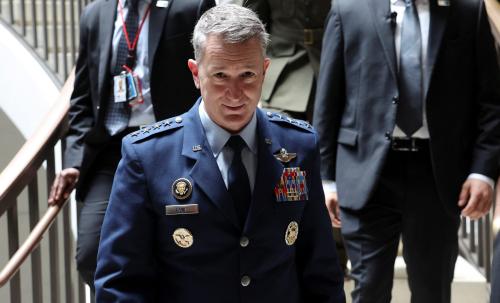In the past couple of months, the Pentagon has moved to the head of the line as Uncle Sam prepares to dole out the new federal budget surplus. Recent world events—Iraq, North Korea, Kenya, Tanzania—help explain why. But the turn of events is nonetheless remarkable in a country that already outspends its nearest military rival by about 5 to 1. Some Clinton administration officials, afraid of Republican charges that they are hollowing out the U.S. military, are talking publicly about adding a whopping $30 billion to annual defense spending.
That type of spending increase would be excessive. Most of it would be dedicated to buy weapons that the country does not really need, at least not in the numbers now proposed. Nonetheless, the Pentagon does need more money—about $10 billion a year—than it is now scheduled to receive under the 1997 balanced budget agreement. That amount would not constitute an increase, but simply enough money to keep up with projected inflation.
Many would say that we have been adding money to the Pentagon budgets for years. It is true that the Republican Congress has added a total of $30 billion to the president’s defense budget requests since 1995, including $9 billion this year. But real spending has still gone down from about $290 billion in 1995 to $265 billion this year (expressed in inflation-adjusted 1998 dollars). All Congress did was to ensure that the cuts would not be even steeper. Real defense spending is now $100 billion less than in 1990, the last year of the Cold War.
Rather than fight, Democrats should go along with this new Republican push and start protecting the Pentagon’s budget against the effects of inflation. Whether they realize it, they have already won the big defense debate. By giving in a little now, they can avoid handing the Republicans a good political issue. More important, they can do what is right for the country.
Why have Democrats already prevailed in the big picture? Because under President Clinton, the U.S. armed forces are about 15% smaller than what President Bush had projected when his administration drew up the first post-Cold War U.S. defense blueprint. That 15% translates into about $40 billion a year in additional savings. Cold War active-duty forces numbered slightly more than 2 million.
The Bush administration developed the two-war strategy, which envisioned fighting countries like Iraq and North Korea at the same time. It estimated that about 1.6 million full-time troops were needed for that and other purposes. The Clinton administration has kept essentially the same global strategy, but found ways to cut U.S. military strength to less than 1.4 million.
Most of the Clinton administration’s defense critics do not propose restoring active-duty strength to the planned Bush levels. They have basically conceded the big picture debate. Rather, critics’ concerns now revolve around paying pilots and other troops enough to keep them from deserting the military in droves, plugging holes in training budgets, eliminating spare parts shortages and ensuring adequate funding for research on missile defense technologies. These are apple pie issues, and on all of them the critics’ positions are right.
Today’s U.S. armed forces remain easily the best in the world. But they are showing increasing signs of strain and are in their worst shape since Desert Storm. Even more important, things are getting worse. No big defense spending increase is needed. But the balanced-budget deal’s further cuts would go a step too far. That should concern liberals as much as anyone. If the military keeps fraying, it will be increasingly difficult to generate domestic political support for peacekeeping and humanitarian operations in places like Bosnia that they have rightly supported.
The Brookings Institution is committed to quality, independence, and impact.
We are supported by a diverse array of funders. In line with our values and policies, each Brookings publication represents the sole views of its author(s).



Commentary
Op-edSpare a Dime for the Pentagon
December 14, 1998